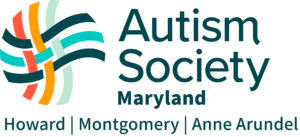It’s the start of a new school year. A time of expectations and anxiety for both students and parents. Parents and teachers have met about IEP goals and objectives, placement, class schedules, and the like. New supplies have been purchased and we’re ready to go! But how will we know our students are making progress toward their IEP goals? How will we know how they are doing with the curriculum? The answer is dataData is used to make informed, objective decisions about student instruction, student placement, and the effectiveness of teaching methods. Parents need to understand what data is, when to expect it, and how to use it.
What is data? What do we mean when we say “data”? We often only think of data in terms of early intervention methodology—VB charts and checklists in a binder, for example. That is data, but data is so much more. Data is anything related to your child’s progress. It can be progress towards IEP goals, unit tests, project grades, homework, interim reports, quarterly assessments, MSA scores, etc.
We should remember that students with IEPSs are general education students first. That means they have the same data collected about their progress as do all students—quarterly assessments, reading benchmark assessments, tests and quizzes, etc. In addition, teachers collect data about the IEP objectives. So if you are asking teachers about data, be specific about what you want to see.
When to expect data? Data for students with IEPs is shared at a minimum eight times per year, just like for any other student. Four report cards, which include progress on IEP goals, and four interim reports are sent home during the school year.
At the annual IEP, specific data for IEP goals should be shared to show mastery of goals or continued need for goals. Every objective written on an IEP must have data collected in order to assess progress. If there is a question about mastery of an objective, ask for the data collected for it. This can be observation records, quizzes, classwork, or an actual data sheet.
How to use data? More important than actually collecting the data is using it to drive instruction. Use it to decide if the student is making progress at the right pace, if he needs to move on more quickly, or if he needs more intensive instruction in another area. How quickly you do this for an objective depends on the objective—for a reading intervention, you may wait a few weeks to review the overall progress; but for a behavior, this might be done weekly (or even daily).
When discussing your child’s progress, ask to see the data. There should be examples of your child progress (or lack of) in the data. If there is no data provided, express concern over how a determination can be made without data.
Who to contact if you have concerns about data collection? If you have concerns about the collection of data that are not resolved with your teacher, you should contact your school’s special education team leader or the resource teacher assigned to your school. Resource teachers are supports for both parents and schools, and provide additional assistance around curriculum and IEP implementation. A list of resource teachers and their school assignments can be provided by the Autism Society of Maryland or by calling the Howard County Public School System Office of Special Education.
Written by Parents for Parents for the Autism Society of Maryland



























